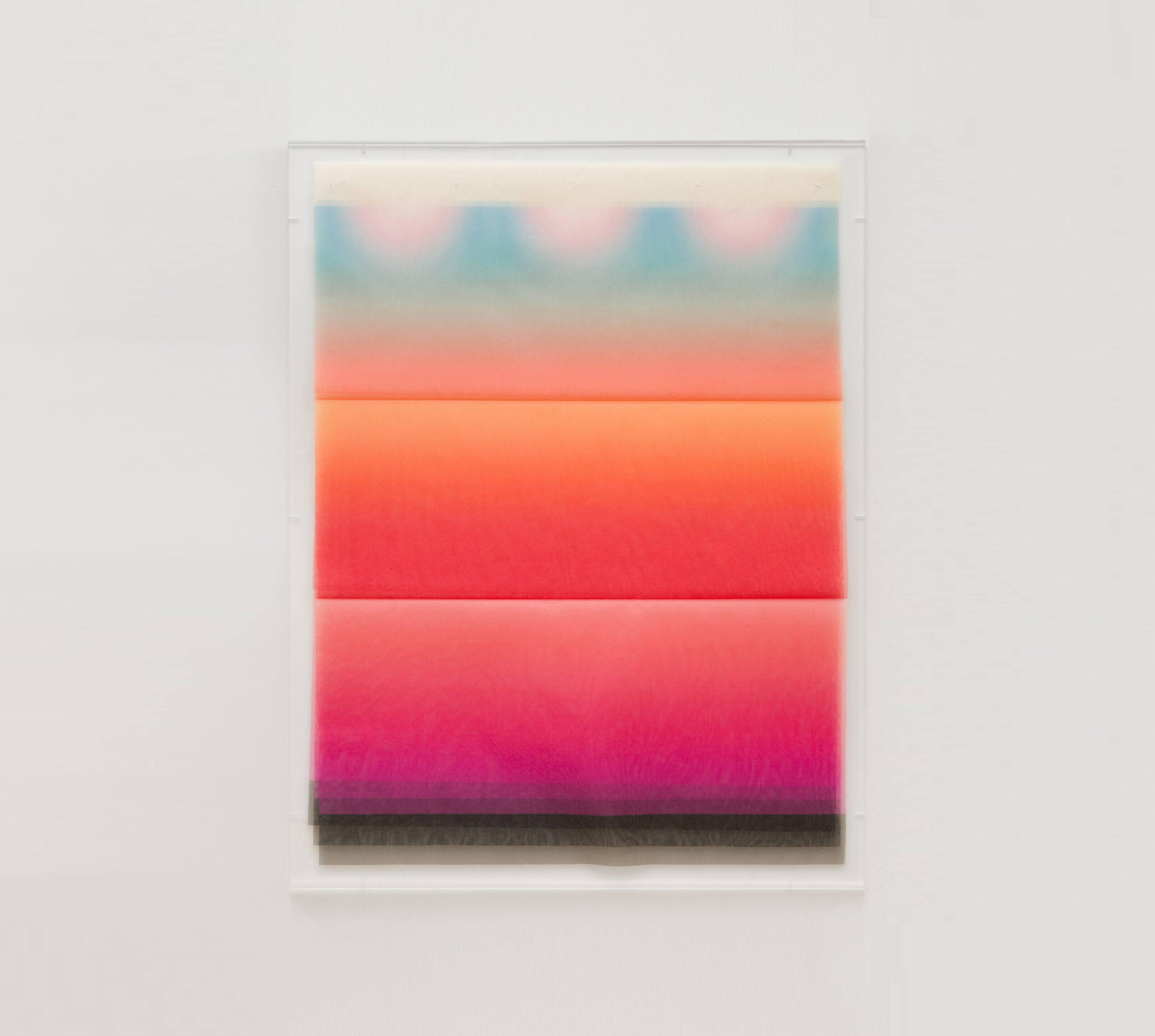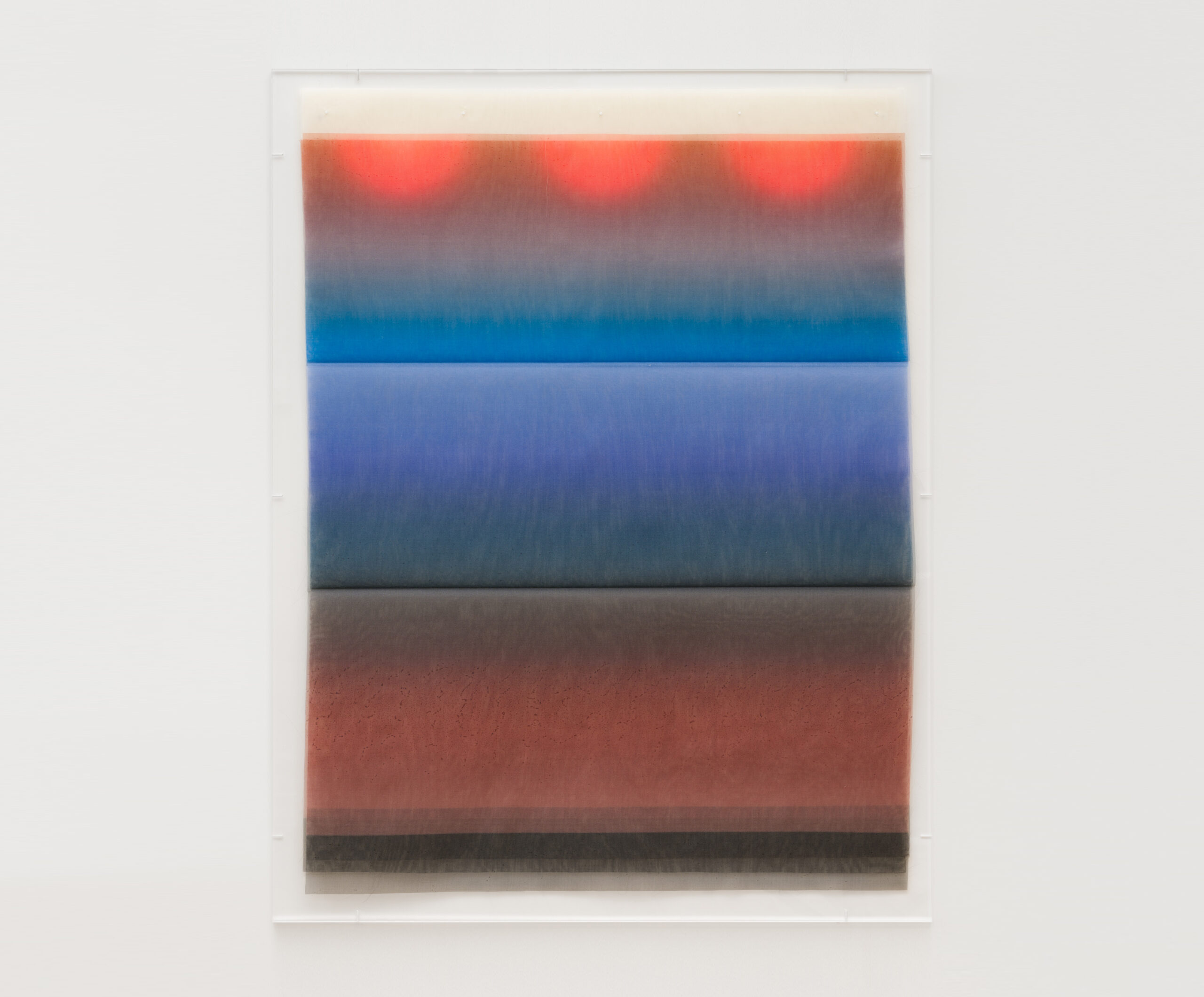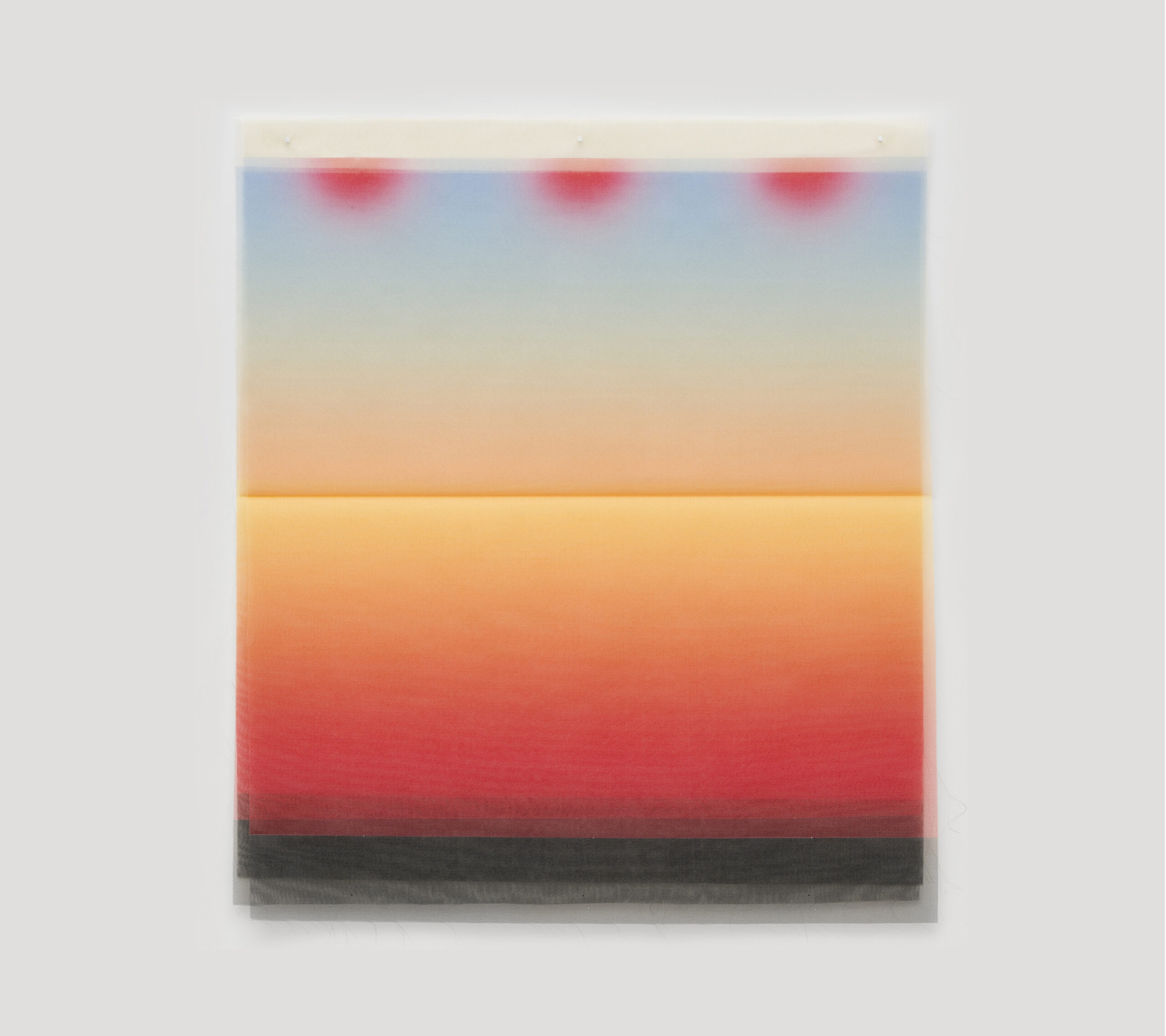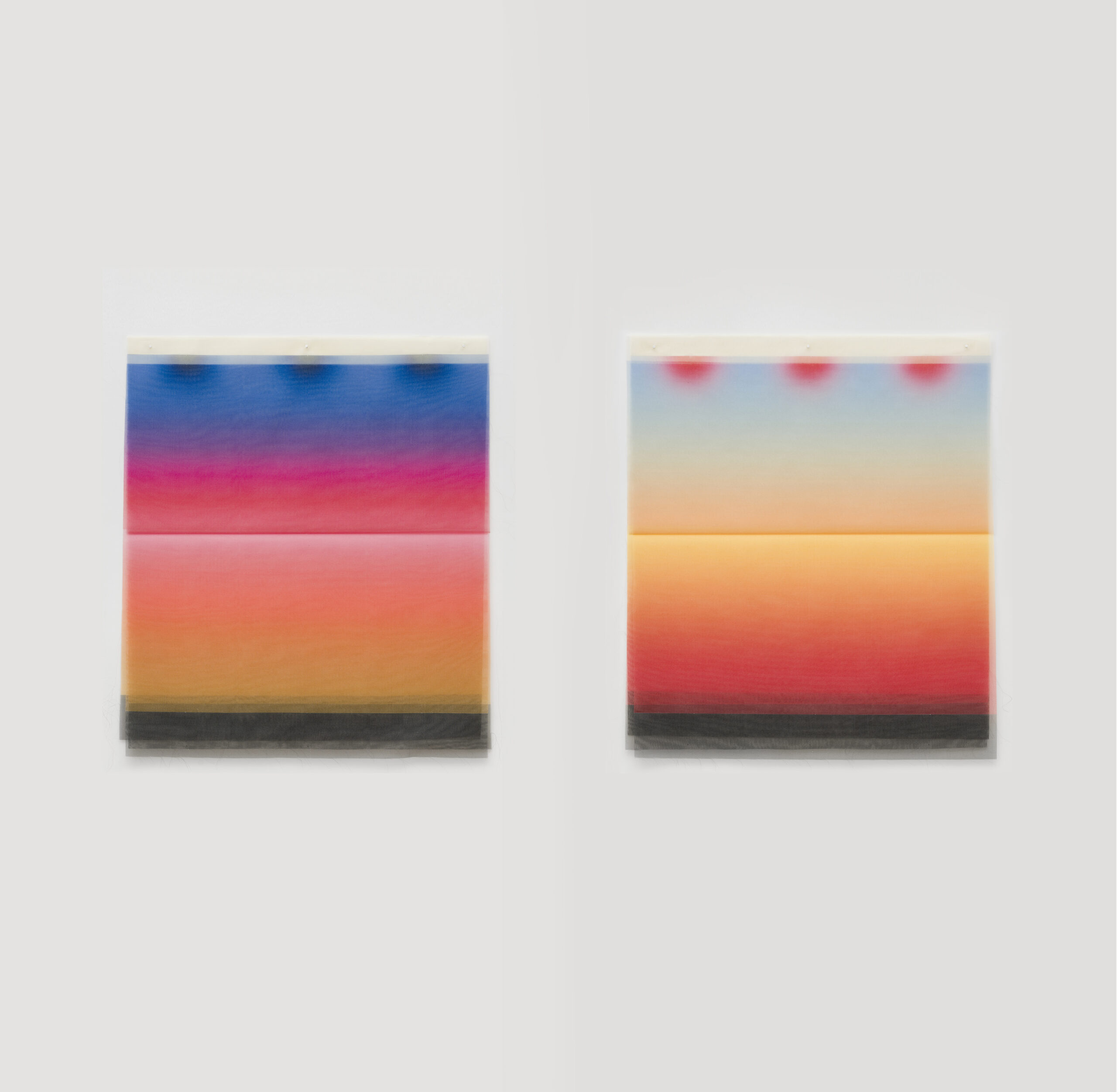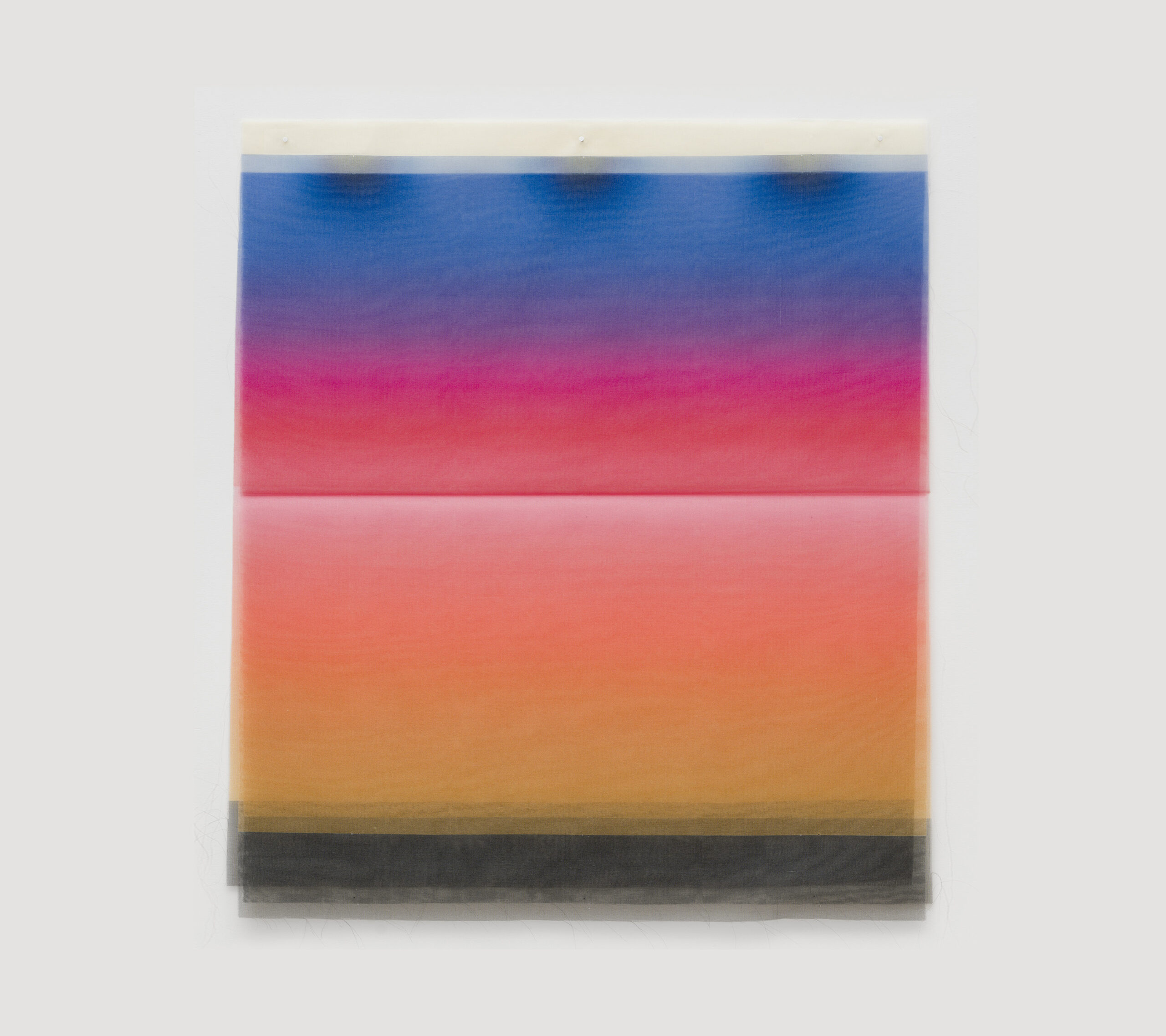E-field, 2023
MO E-F 23
E-field is an open series of textile works in which Odgaard uses layers of transparent silk organza in order to materialize colour.
The silk is printed with reactive dyestoff in coloured fields and pinned at the top with nails, alowing for the sides of the organza to move freely. At the center of each layer, a fold draws the eye into the surface, creating an optic illusion of a colour graduation.
The layers of crisp, translucent silk organza seems to be illuminated by electricity, but the vibrancy is in fact light moving through relatively sheer textiles. Scottish physicist James Clerk Maxwell described light as a propagating wave of electric and magnetic fields in his formulation of electromagnetism from
The three focus points at the top are the voltage centers of the electromagnetism. Short for Electric Field, the colours of E-field are materialized in the traveling of light through the layers of the material. This creates a sensation of moiré effect that serves to emphasize the feeling that the colour sparkles in the surface. Furthermore, static electricity occurs from time to time in the meeting between the silk organza and the acrylic glass, which makes the textile electric and alive.
According to Margrethe Odgaard, the experience of colour is not static but rather a fleeting result of the meeting between material and light, or a sensory illusion that we might try to maintain, as one captures the beauty of a butterfly by pinning it down.
